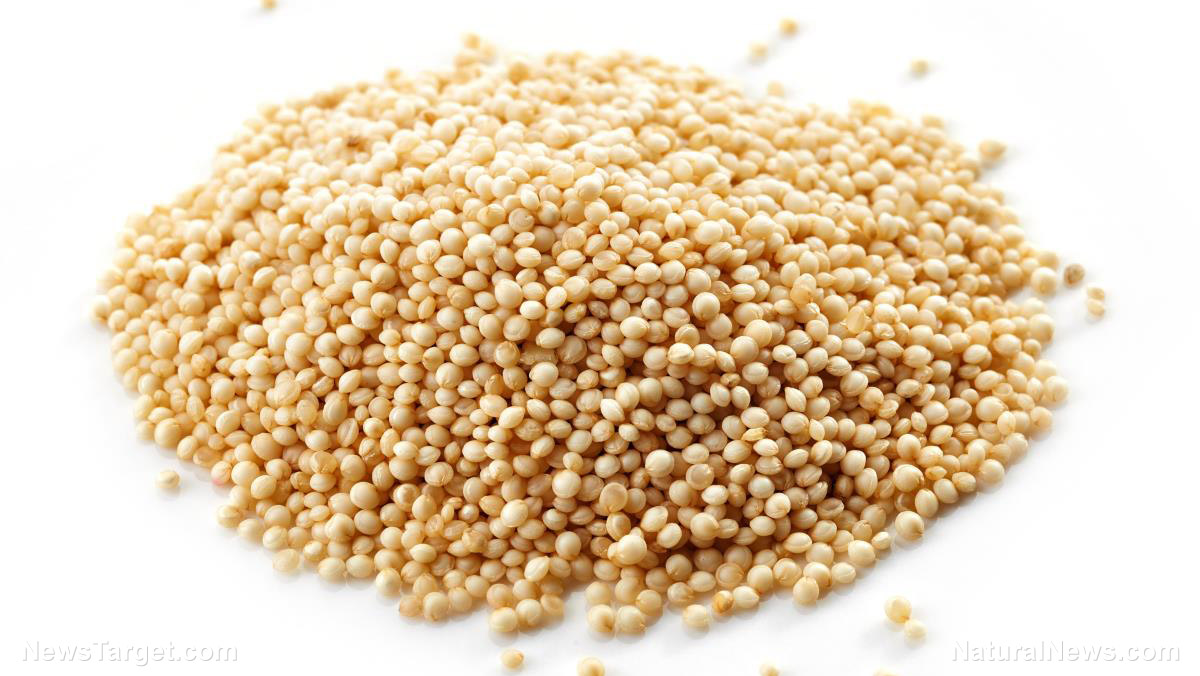
Advertisement
Amaranth is a fascinating superfood. As a pseudocereal, it has a similar nutrient profile to oats and wheat. Grow this superfood in your home garden so you can have access to a versatile grain that’s rich in antioxidants.
Amaranth’s impressive nutrient profile
If you have gluten sensitivity or intolerance, you should incorporate amaranth into your diet. This superfood is naturally gluten-free and is a healthy source of carbohydrates.
Amaranth is full of dietary fiber, antioxidants, micronutrients and protein, all of which you need to maintain good overall health.
Classified as a pseudocereal, amaranth is technically not a cereal grain like wheat or oats, even if it contains a similar set of nutrients and can be used in similar ways. Amaranth has an earthy, nutty flavor that works well in different dishes. Cooked amaranth isn’t fluffy. Rather, it has a porridge-like consistency.
A one-cup serving of cooked amaranth contains 251 calories and 9.3 grams of protein. The same serving contains 46 grams of carbs, 5.2 grams of fat and 105 percent of the recommended dietary intake (RDI) for manganese, a nutrient that’s essential for brain function.
Amaranth also contains the following nutrients:
- Copper (18 percent of the RDI)
- Iron (29 percent of the RDI)
- Magnesium (40 percent of the RDI)
- Phosphorus (36 percent of the RDI)
- Selenium (19 percent of the RDI)
Amaranth is full of beneficial antioxidants that can protect your body from free radical damage, which is linked to the development of chronic diseases.

Growing and harvesting amaranth
You can buy amaranth at your local health store, but growing it in your home garden will give you access to the grain all year round, especially if you store it properly to extend its shelf life.
Tips for growing amaranth
Amaranth seeds are small. You just need to sprinkle and rake them into garden soil. The plant itself is self-seeding and will produce more plants next year if you let it go to seed.
You can grow amaranth year-round in tropical locations since it loves warm climates and lots of sunshine. Grain varieties of amaranth will take about 110 to 150 days to produce grain. If you live in a colder climate, start planting amaranth during spring.
Grow different varieties of amaranth if you want to use it as both seed and leafy green. Like other kinds of greens, amaranth leaves can be harvested while the plant is young for the best flavor. But do note that if you do so, the plant will never mature to produce seeds, so choose some of the healthiest plants to become seed plants and use the rest for fresh salads.
Tips for harvesting amaranth seeds
Amaranth plants can produce lots of seeds for your kitchen, and you can produce and harvest enough amaranth to store for months or even years. Once an amaranth plant goes to seed, harvest the seed heads by cutting them off the stem.
Let the seed heads dry for several days in the sun and make sure to get rid of any dampness or excess moisture. Place the dry seed heads in a paper bag and shake vigorously until the individual seeds fall off. Strain the seeds through a sieve to remove the outer shell.
Storing amaranth seeds
Store amaranth seeds in airtight containers such as a glass jar. Keep them in a cool, dry spot away from direct sunlight to extend the seeds’ shelf life to several months or even years.
Amaranth flour should be stored in an airtight container and kept in the fridge or freezer due to its fat content. The flour will last up to three months in the fridge or six months in the freezer.

Cooking with amaranth
Amaranth is often used to make cereal or porridge. Other parts of the plant can also be used to make tasty salads or to top dishes.
Amaranth salads
Amaranth leaves are tasty and can be used to make delicious salads. An amaranth salad contains three times the amount of calcium and niacin in a spinach salad.
It’s better to grow your own amaranth leaves for cooking since cut leaves don’t last long and should be eaten on the same day for the best flavor and texture.
Amaranth popped toppings
Did you know that amaranth seeds can be popped like corn kernels? Add a tablespoon of amaranth seeds to a hot pot and stir the seeds as they pop to keep them from burning. When you’re done, you’ll have fluffy kernels that you can eat as a snack or use as a topping for salads or soups.
As a thickener
Amaranth becomes gelatinous when mixed with water. You can use it as a thickener for jellies, sauces, soups or stews instead of flour or cornstarch.
To use amaranth as a natural thickener, cook it by combining water with amaranth in a 3:1 ratio. Heat the mixture until it reaches a boil, then reduce the heat and let it simmer for about 20 minutes or until the water is absorbed.
Gluten-free amaranth flour
Grind harvested amaranth seeds to make a nutritious, additive-free flour for baking. This gluten-free flour can be mixed with water to make a flatbread that you can use for wraps or pair with soups.
Follow the recipe below to make amaranth flour at home.
Ingredients for 2.5 cups of flour:
- 2 Cups of amaranth seeds
Preparation:
- Heat the amaranth seeds in a large pan. Dry roast over medium heat for five to seven minutes while stirring occasionally. Set aside to cool.
- Use a blender to process the roasted amaranth seeds into a fine powder.
- Store the amaranth flour in an air-tight container.
Grow amaranth and use its leaves and seeds to make tasty salads or a nutritious, gluten-free flour for baking.
Sources:
Advertisements







